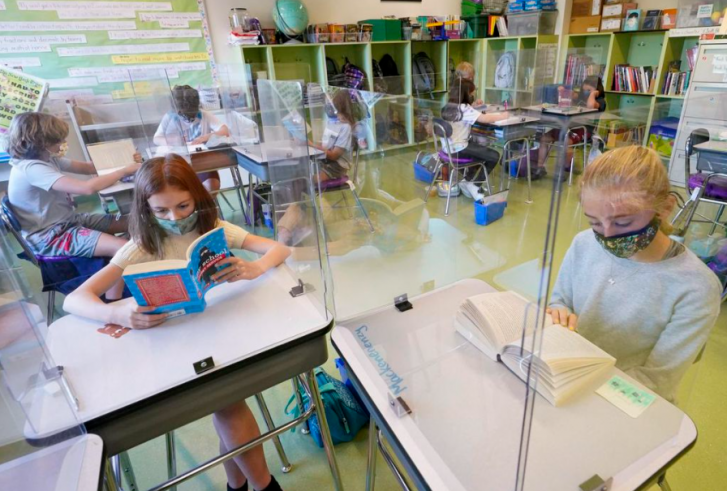It’s the dog days of the pandemic. We continue to follow public health guidance, which is getting less restrictive, as we wait for vaccines to end this crisis. We have learned so much over the last year about how to better protect ourselves, including critical information that COVID is likely transmitted predominantly via airborne spread.
And yet, many of our infectious disease and public health specialists — including our chief medical officers of health — seem to be unable to say the word “airborne” or “aerosol” out loud, and instead continue to emphasize measures such as deep cleaning and plexiglass panels.

All major medical journals have recently published breakthrough pieces on airborne transmission. The Lancet, BMJ, JAMA, Science, the NEJM, Nature and our own CMAJ adeptly summarize the growing body of evidence supporting airborne transmission and advocate for improved mitigation measures. Both the CDC and the WHO have recently acknowledged the importance of short- and long-range aerosol spread of COVID-19.
The droplet/contact paradigm favoured by public health sees sneezes or coughs creating droplets that either travel directly to the nose and mouth, or that land on surfaces touched by fingers that transmit the droplets to your mucous membranes. In contrast to the airborne mode of transmission for COVID-19, the droplet/contact route has seen no similar tsunami of peer-reviewed evidence. Indeed, the CDC has gone so far as to say that contact transmission is extremely rare: “each contact with a contaminated surface has less than a 1 in 10,000 chance of causing an infection.”
Canada’s top public health organization, the Public Health Agency of Canada (PHAC), has produced strong, unbiased summaries of the evidence for airborne transmission. There have been three, each one with stronger language supported by the evidence. The March 2021 version is 60 pages long and covers 84 different primary studies, the vast majority supporting airborne transmission.
But these summaries are very hard to find. They are not posted publicly, and PHAC has specifically requested that the reviews not be shared. In order to receive a copy, you first have to discover its existence, find the title and email PHAC for a copy.
Evidently, our public health leaders have also not seen these documents, as they consistently dismiss the evidence. As such, Canadians remain confused as to the best methods of avoiding transmission. The focus is still on the neverending cleaning of surfaces and putting up splash guards (which are ineffective against airborne particles), instead of using properly fitting masks, moving our interactions outdoors, and improving our indoor air through ventilation upgrades (including easy solutions like opening windows and doors) and air filtration.
This is not just an esoteric academic debate. Although cases are dropping, there are still over a thousand new cases per day nationally, now predominantly in children — of whom only those 12 and older can receive vaccinations. In addition, increasingly transmissible variants are beginning to appear. Hospital outbreaks continue across the country. For example, last week saw nine health care workers in Calgary’s Foothills Medical Centre infected with the new Delta variant in a hospital system where better-fitting masks (N95s) were available but discouraged and not used.
Responding effectively to a health crisis that impacts all Canadian citizens is not an easy task. Agencies such as PHAC consistently face immense pressure to devise the best plans of action during a rapidly changing emergency. While acknowledging these challenges, it is still crucial to ensure that public health leaders act swiftly when the scientific consensus shifts in an important new direction.
Wider transparency on what we now know about the airborne spread of COVID-19 would have a far-reaching impact on keeping people healthy. Talking about it is the first step in ensuring that people, schools and businesses are empowered enough to protect themselves and re-open safely.
The understanding of viral aerosolization will be seen as one of the most important scientific advances of the COVID-19 pandemic. But what is the purpose of knowledge if it is not translated into practice?
If our public health leaders can accept the science, they can teach the public the fundamentals of COVID-19 transmission, and we can all make the right decisions to prevent more unnecessary illness, long COVID and deaths.
Article From: The Star
Author: By Joe Vipond
Contributors: Kashif Pirzada Danielle Cane

